|
Paper 11
Cotillion Dancing in England, 1760s to 1810s
Contributed by Paul Cooper, Research Editor
[Published - 24th February 2015, Last Changed - 21st September 2024]
Cotillion dances (the choreographed dance for 4 couples, not the modern débutantes ball) arrived in England in the 1760s. In this paper we'll review their introduction, characteristics and popularity amongst social dancers. In previous papers we've investigated some of the figures used in Cotillion dancing (Allemande, Pousette, Promenade), and their subsequent adoption into English Country Dancing; we've also investigated the origins of the Quadrille dance and how Quadrilling evolved from Cotillion dancing.
The terms Cotillon and Cotillion are used interchangeably in English sources throughout this period. Earlier English sources tend towards using Cotillon, whereas later sources are more likely to use Cotillion, but both terms are used throughout. A few source works even use Cottillon, Cotilion and Coutillon, and some call them French Country Dances. We here at RegencyDances.org tend to use Cotillion as being the more common term used in England during the Regency era.
Introduction of the Cotillion
Cotillion dances originated in France and were absorbed into English social dancing in the mid to late 1760s. The first collections of English Cotillions were published in London c.1767. An example was advertised in The Public Advertiser (23rd December, 1767), Messrs Randall and Abell reported This day is published, Sixteen Cotillons, or French Dances, as performed at Court and all polite Assemblies . If the subtitle is to be taken literally, the Cotillion was already widely adopted at this early date.
An Italian Dance Master in London, Monsieur Gherardi, published his first collection of Cotillons in 1767; their success was such that a year later he reported: N.B. These Cotillions were first published in last March, and some of the figures of the Cotillions, with other music put to them, having since been pirated, the nobility and gentry, to avoid being imposed on, are humbly desired to be careful not to have the spurious copies put into their hands for the genuine. (The Gazetteer and New Daily Advertiser, 10th June, 1768).
But it was in 1768 that the Cotillion caught the public's awareness. There are barely any references to Cotillions in the English press prior to 1768, but dozens of references in 1768, including the following examples:
A correspondent informs us, that if the English country dances are all the mode at Paris (as mentioned in our last) we are even more with them here, for that the French country dances are now equally the 'bon ton' at London; the Cottillons, &c. being now taught in all the great boarding-schools, and danced in all the polite assemblies in this metropolis and its environs. (The Gazetteer and New Daily Advertiser, 13th February 1768)
A country dance of a new nature called a Cotillon, and which admits but of eight persons, has lately been introduced in the polite world from France, and is now in great esteem, among our people of quality. (Lloyd's Evening Post, 4th March, 1768)
An advert for an Assembly in Soho Square reports: On account of the Royal Family, Nobility, and Gentry, now universally dancing the Cotillons, which are very elegant French Country Dances, lately introduced into the gay and fashionable World, at all their Assemblies... . (The Public Advertiser, 8th March, 1768, see Figure 2)
An advert for Dancing Masters Welch and Hart reports: N.B. Mr. Welch begs leave to observe, that he, finding Cotillions, &c. an essential Requisite in this Nation, has lately been to France, where he had an Opportunity of perfecting himself in the above mentioned fashionable Dances under the most able Masters there. (The Public Advertiser, 5th May, 1768). Their advert a few months earlier didn't mention cotillions (The Public Advertiser, 26th February, 1768), so Cotillions only entered their repertoire in early 1768.
Dodsley's Annual Register for 1768 reported on the King of Denmark attending a Cotillion ball at Mrs Cornelys' house in London. Mrs Cornelys hosted subscription balls for the dancing of Allemandes and Cotillions at her Society in Soho Square. Her advert in The Gazetteer and New Daily Advertiser (13th December, 1768) reported that a new gallery had been constructed for the dancing of Cotillions and that they are all perfectly dry, they having been not only erected in the heat of summer, but the whole (as well the ceilings as the sides) lined with boards throughout. . A subsequent advert in 1772 (Public Advertiser, 2nd April) reported that the Cotillion gallery had been completely refurbished in a much grander scale - perhaps hinting at their growing popularity.
It's likely that Cotillion dances had been danced in English assemblies throughout the 1760s, but it's in 1767 and 1768 that they became widely adopted. Cotillions are regularly mentioned in adverts for Balls, Dancing Academies and musical publications, from 1769 forwards.
The earliest English reference I've found to the word cotillon in the context of a dance is in the 1766 New Bath Guide. It's only a passing reference, but it suggests that the rise of the Cotillion might have begun in Bath. According to the 1774 The Rival Ball Rooms, weekly Cotillion Balls were being held at Bath from around 1771. Regular Cotillion Balls were also held at Margate from 1770 (The Public Advertiser, 9th June, 1770). Irregular Cotillion balls were advertised in London from around 1770, including Tassoni's Ball at Cooks-Hall, Aldersgate Street (The Public Advertiser, 3rd November 1768), Gallini's Ball at Almack's Assembly Rooms (The Public Advertiser, 24th February, 1770), Gherardini's Ball (The Public Advertiser, 9th March, 1770, see Figure 8) and Noverre's Ball (The Public Advertiser, 30th March, 1770), in addition to those of Mrs Cornelys. The Lady's Magazine for 1771 reported on the plan for the Pantheon club in London, it promised That there shall be a band of music, in the ball-room up stairs every night, for cotillons (The Pantheon didn't open until 1772). It's curious that many of the early dance masters to teach Cotillions in London, and the hosts of early Cotillion Balls, appear to have been Italian.
The image in Figure 1 shows a particularly early example of an English Cotillion. It dates either to 1771 or 1770. It subsequently reappeared on the cover of an 1820s set of Quadrilles (see Figure 9).
Aside: It should perhaps be noted that the Cotillon dance form existed in France throughout the 18th century, it probably saw isolated appearences in Britain prior to the 1760s. The Cotillon may in turn have been derived from the English Country Dancing of the 17th century (both the structure and terminology has antecedents in John Playford's 1651 English Dancing Master publication), English Country Dancing in turn has its own roots elsewhere. The terms Cotillon and Cotillion were new in Britain in the 1760s but the general concepts required of the dance were already known. An interesting investigation of the subject is available courtesy of Anne Daye of the Historical Dance Society, she suggests that the Cotillion was itself influenced by English dance structures of a still earlier date.
Form of the Cotillion
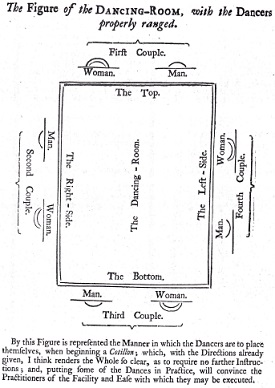
Figure 3. The Figure of the Dancing Room, Hurst, 1769.
Image © BRITISH LIBRARY BOARD, d.67 ALL RIGHTS RESERVED
Many writers published guides to the dancing of Cotillions in England in the late 1760s and early 1770s, including Fishar, Gallini, Gherardi, Hurst, Sancho, Siret and Villeneuve. They all describe the same basic concept, with minor differences. These key characteristics are:
A Cotillion generally involves 8 dancers in 4 couples. Couples usually stand in the form of a square with each man to the left of his partner. One couple stands at the head of the square, one at the foot, and the other two on the sides. Figure 3 is Thomas Hurst's 1769 description of the shape of a Cotillion.
The couple at the top of the room with their backs to the musicians are the first couple. The couple to their right are the second couple, the third couple is opposite to the first couple, and the fourth couple are on the left of the first couple (see Figure 3).
A Cotillion is made up of Changes and Figures. These are roughly equivalent to the Verse and Chorus in a song. A dance consists of a Change, followed by the Figures, followed by a Change, followed by the Figures, and so forth until the dance ends. The Figures remain the same in each iteration, but the Changes vary. Many publishers provided lists of acceptable Changes, though some lists varied slightly from one to the next. The Figures show much more variety between Cotillions, and make up the core of the dance.
A Cotillion begins with a Change, often the Grand Rond.
The figures of the dance are choreographed, the dancers learn the sequence of figures in advance.
All 8 dancers will generally participate in each figure of the dance.
These characteristics are generally applicable, particularly for 18th century Cotillions, but variations did exist. For example, Longman published a Cotillion for 9 dancers in 1768, and Siret published Cotillions in a flattened format involving two lines of four dancer in 1770 (an example of which is Le Point du Jour). A dancing master named Mr Boutmont published a Cotillion for just six dancers in 1772. All of these anomalous examples were published in London.
Notes to Musicians
Some of the writers also provided directions to the musicians. In some cases these notes are unexpected.
For example, Giovanni Gallini explained c.1772 that some of the Changes in a Cotillion are 16 bars long, and others are just 8 bars long. He required the musicians to pad the music accordingly, depending on which Change was being danced. The Musician is desired to observe, that when the Dancers have compleated the Figure as expressed in the Cotillons, the first Part of the Music is to be played but once for every Change, (which takes eight Bars) excepting 'La Grande Chaine', 'La Course or La Promenade', and 'Le Grand Rond', which take sixteen Bars. He expected the length of the Change to vary in each iteration, depending on the specific Change that was being danced.
Monsieur Gherardi made an even more unusual demand of the musicians. In his 1767 first collection of Cotillons he wrote: It frequently happens, in dancing the Cotillons, that Ladies & Gentlemen finish out of Time at the termination of the first part of the Tune; ending sometimes too soon, & sometimes too late. In order to avoid the Confusion which would otherwise be the consequence of such Inattention or Mistake, the first Violin ought to know the Air by Heart; and when the Dancers do not come to their Places soon enough, instead of Playing it only twice or thrice, he must repeat it till they are all properly arrived there; and, on the contrary, when the Dancers are so quick as to get their Places too soon, he must keep pace with their Movements, and proportionally shorten the repetition. If this Rule is punctually observed, no Confusion can possibly ensue . A variant of Gherardi's rules for dancing Cotillions were also published in the national press, including in The London Magazine for 1768.
Gherardi was criticised for his advice to musicians, he defended his position in his 1768 Second Book of Cotillons. He explained that if all the Dancers are not come to their Places at one time, the Musicians should repeat the first part, or half the first part, till they are all arrived; then instantly cease the first part, & go to playing the second; & in like manner, repeat the second as well as the first, if required. If this Rule was not to be observ'd, & the Musician was to begin the second Part as soon as he had finish'd the first, when perhaps only one half of the Dancers should be arriv'd at their Places, pray what would become of those Couples which were not yet arrived there? .
Gherardi's advice runs contrary to the mainstream of Cotillion dancing. Most sources are understood to have the Changes take 16 bars (though as we'll see below, this isn't entirely clear), and emphasise the responsibility of the dancers to concentrate on the timing of the dance. Gherardi's advice might be expected to introduce confusion rather than avoid it; perhaps his advice was intended to tolerate those dancers who assume 16 bar changes even if the band only expected 8 bar Changes. It may even have been a face-saving tactic to avoid the need to tell Royalty, the Nobility or Gentry, that they have terrible timing! Perhaps the musicians were to alter the music to match whatever the most important person in the room was dancing.
Thomas Hurst in his 1769 The Cotillons Made Plain and Easy also included directions to the musicians. His advice is to play the music at a suitable speed for the dancers.
I shall next explain the Manner of doing the Changes, and must now make a Request to the Musicians; which is, that (as the Dancers are obliged to adapt their Motions to the Time of the Music) they will be careful to play each Tune in such a moderately quick Time, as not to destroy the Sprightliness for which these Kind of Tunes are so justly admired, or so slow as to render them dull and heavy; but let them be play'd in the true 'British' Taste, as expressively as possible; which will not only be easier to themselves, but will suffer the Performers to do every Thing with more Propriety, and consequently every Figure and Change will be shewn to Advantage, which would otherwise be quite destroy'd if the Quickness of the Measures hurry the Dancers beyond their utmost Speed and Endeavours: But from a brisk Movement, with moderate Quickness, the Dances will receive a considerable Addition, and give Pleasure both to the Performers and Spectators, without fatiguing the Dancers and Musicians, as they generally are by the precipitate Manner in which the English Country-Dances are too frequently play'd, whereby the Whole is rendered a Scene of Confusion, not easily rectified.
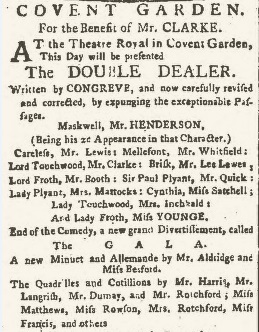
Figure 5. Stage dancing, an advert in The Public Advertiser, 16th April, 1782. (Courtesy of NewspaperArchive.com)
Figure 4 depicts a 1792 rehearsal of a Cotillion. This may be a walk-through prior to the Cotillion being danced properly. An interesting detail is that each dancer has a set of printed instructions containing the figures for the dance. The dancers in the foreground appear to be struggling, but the dancers in the background are more successful. Someone to the rear is attempting to gain the attention of the musicians, they are located in the musician's gallery and elevated above the rest of the assembly.
Performance Dancing and Social Dancing
Historical dancing references might be split into two broad categories - social dancing for personal enjoyment, and performance dancing for the entertainment of others. Cotillion references can be found in both contexts. Cotillions could be danced on stage by professional ballet dancers (see, for example, the end of Figure 5), with well trained performers dancing with fancy steps and perfect timing to impress their audiences; regular social dancers weren't expected to achieve the same degree of perfection. Social dancers danced for their own enjoyment and that of their companions, they were only expected to understand the basics of the dance and to have learnt the figures. Cotillion dances were choreographed, a failure to know the figures could be unpleasant for all involved; for example, the author of a 1782 letter to The Morning Herald (16th September 1782): begs leave also to put the Hampstead Beaux in mind to perfect themselves in their cotillons before they come into the Ball-room; as it is not only ridiculous, but impertinent in those who pretend to lead down a dance - to make the company wait till they have learnt the figure of it from a book; or have with much difficulty been made to comprehend it by their more accomplished parters!
A poem Humbly dedicated to the Dancers of Cottillons appeared in Pope's Bath Chronicle for 7th May 1767. It described cotillion dancing at the Spring Gardens in Bath, and included the lines For what can be equal, I pray to the sequel? What compar'd to the gay cotillion? Where with steps, or without it, quite careless about it, You're sure to dance in the bon ton. . It implies that fancy stepping was considered to be optional amongst the aristocratic bon ton from the outset. A copy of the poem is included in the 1906 Proceedings of the Bath Natural History and Antiquarian Field Club, though it misquotes careless as careful , subtly changing the meaning of that line.
Several publications offered simplified techniques to make Cotillion dancing more accessible for ordinary dancers. Thomas Hurst emphasised the need for simplicity in the introduction to his 1769 Cotillons Made Plain and Easy: It is obvious, that the French Cotillon Books already published cannot be of Service to any but great Proficients, on Account of the numerous and difficult Terms and Steps therein made Use of; nor even to those, as they are seldom executed with Propriety, for the Dancing-Masters themselves account them unintelligible; and it is therefore impossible that Technical Terms, used only by the Performers of the Theatres, should be understood by Ladies and Gentlemen, who dance only for Amusement. .
Hurst's book aimed to simplify Cotillions for ordinary dancers. His main innovation was to remove any instructions for steps from Cotillion dancing, including any references to the Rigadon and Allemande. Giovanni Gallini similarly avoided rigadons in the Changes for his c.1772 collection of Cotillions, though probably for different reasons (they were employed elsewhere in his dances). Gallini managed the Hannover Square Assembly Rooms and went on to manage the King's Theatre Opera House during the 1780s; it's possible that his Cotillions were danced on stage at the Theatre, they were almost certainly danced at his Festinos at Hanover Square.
James Fishar also adapted Cotillion dances for the general public in his 1778 Twelve new Country Dances, with Six Cotillions . Fishar had worked as a Ballet Master and principal dancer at the Covent Garden Theatre in the 1770s, and he had an ambiguous role at the King's Theatre Opera House when management of the two theatres was briefly merged in 1778 (he claimed he'd been at the King's Theatre for 10 years, but that seems unlikely). He published a collection of Cotillions in 1773 that were suitable for Stage dancing; then, in 1775, he began publishing Country Dances in a new stile, which will be so clearly and concisely described as to render them perfectly intelligible at the first view (The Morning Chronicle and London Advertiser, 14th March, 1775). In 1778 he adapted this concept to Cotillion dancing: Mr. Fishar, being convinced that many ladies and gentlemen do not like to dance cotillions, on account of being obliged to learn the steps, Mr. Fishar thought himself bound in gratitude for many favours he has always received from the public, both in his capacity of first dancer, ballet-master, and in all his publications, to find a method for them to dance those kind of dances, without any steps but the common country dance steps. (General Advertiser and Morning Intelligencer, 5th March 1778, see Figure 6). Fishar took the same approach as Hurst, he removed all rigadons and similar instructions from the Cotillions.
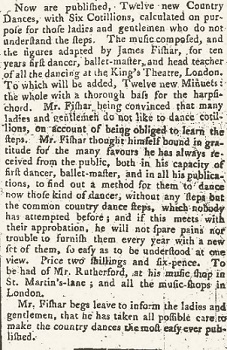
Figure 6. Fishar's advert in The General Advertiser and Morning Intelligencer, 5th March, 1778. (Courtesy of NewspaperArchive.com)
Aside: Modern dancers who recreate historic dances are always faced with a challenge: should they recreate dances with the skill and proficiency of contemporary Performers of the Theatres , as taught by the elite dancing masters? Or should they recreate dances as they are likely to have been performed by ordinary dancers in a social context? Some dancing masters would emphasise the importance of precise stepping and require their pupils to attend for many lessons; others claimed to perfect pupils in just a few hours. Several dancing masters wrote about the terrible performance of typical social dancers, in so doing they reveal that many social dancers didn't care for perfection.
If you're anything like me and have two left feet, take heart; some contemporary Ladies and Gentlemen who dance only for amusement (Hurst's phrase) were no different.
As a counter-point to the above, it's worth remembering that some dancers were supremely talented. The anonymous author of the 1823 The Etiquette of the Ball-Room by A Gentleman commented on some excellent Cotillion dancers he nostalgically remembered from the 1780s (and contrasted them to the terrible Quadrille dancers of his own day):
... I refer to the grandest assemblies ever known in England, viz. the Festinos, at the Hanover Square Concert Rooms, ... I have a perfect recollection of the figures of the Cotillons danced at those grand Balls, and have seen eight sets of the first nobility in Europe, who danced them 'perpetual', in the manner of Quadrilles.
I may, however, tell the admirers of Dancing and Music, that the 'piano' movements of those Cotillons were eminently beautiful and graceful; for I have witnessed, after the eight bars 'piano', except the last note, that the sixty-four dancers correctly finished the last spring step in the third position, to the last note in full voice, - every one of the eight sets correct in their places at the concluding note. This had a grandeur in effect, and a display of science no Quadrille in England must venture to look at. The whole of those Cotillons were an accurate variety of ease and elegance, scarecely visible but in the few instances of Quadrilles, which instead of being inferior ought to excel.
The Festino dancers studied under Sir John Gallini, Gallini even published a popular Cotillion in 1776 called Il Festino (Hibernian Journal, 6th May 1776). The Festino dancers eventually moved their Assembly to Almack's Assembly Rooms, adding significant prestige to that venue in the process.
Examples of Cotillions being danced on stage include a production of The Genii (Leeds Intelligencer, 4th June 1776) which featured a Cotillion by the Characters . A similar claim was made for The Governess (Saunders's News-Letter, 24th February 1777), Harlequin Doctor Fastus (Caledonian Mercury, 15th December 1777), The Belles Strategem (Derby Mercury, 9th August 1781), The Maid of the Oaks (Cumberland Pacquet, 3rd December 1782), and The Elopement (Norfolk Chronicle, 16th August 1783).
The Norwich based dancing master T.B. Bruckfield identified the main steps in Cotillion dancing in his 1787 Eight Cotillons, Eight Country Dances, & Two Favourite Minuets; he listed them as:
- The Ballance,
a Step that takes up two Bars, and is very much used in the Cotillons, from which, generally proceeds the Rigadoon.
- The Rigadoon,
consists of four different motions of the feet, and is of the length of two Bars: This Step is often practiced to fill up several intervals in Dancing.
- The Contretems,
is of an equal number of motions with the former, and is generally made to carry the Dance in a line either backwards or forwards, and is also made in turning.
- The Chasse,
is made sideways, either to the right or to the left, and is either single or double: the last is generally thought the most elegant, and takes two Bars.
- The Pirouette,
is made by different Steps, either single or double, to the right, or to the left, and takes two Bars.
- The Gavot Step,
is very natural, and is the ground-work of the Cotillons; and, is done in making the rounds, courses, and figures, each of them is equal to half a Bar; and, altho' every Step ought to be regulated in its motion, and of an equal distance; yet there are cases in which it is necessary to lengthen or shorten them accordingly, besides which, it is to be observed, that the Minuet Step is sometimes used.
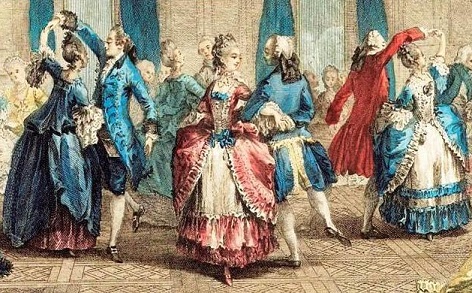
Figure 7. Le bal paré, by Antoine-Jean Duclos, 1774; featuring what appears to be a French Cotillion Image Courtesy of Wikimedia Commons.
The steps used for Cotillion dancing may have changed over time as fashions and styles evolved; but Bruckfield's instructions are helpfully concise, they are likely to have been representative of much of the era.
The musical publishers Longman & Lukey published a set of playing cards featuring Cotillions in 1770 (Gazzetteer and New Daily Advertiser, 9th November), a selection of which are available through IMSLP. Each playing card featured a different Cotillion dance. They report: The Cotillons are called by the different characters of a Pack of Cards, on each is represented a type of the card, and also the tune, which render them a double amusement. The like musical curiosity never before published, nor attempted . These Cotillions were presumably intended for a social dancing context. A surviving example of these ephemeral cards is available from the British Museum. The front of each card features an inset image of the card that's represented (such as the Six of Clubs), together with the music for a Cotillion; the back of each card is plain, as with any other pack of playing cards; the figures were printed in a separate booklet. Longman and Lukey had published a similar set of cards for both Country Dancing and Cotillions earlier that same year, describing them as: quite new, and exceeding useful, being contrived in so small a compass, that the whole pack will lay in a common card-case, and far preferable to any books, being no trouble in turning over, are handy to shuffle or cut for a dance, also to see the figure at a view without the least incumbrance; and of great service to learners, as they may keep the card, with the dance and figure in their hands, without the least inconveniency (The General Evening Post, 20th January 1770). By 1775 these Cotillion cards were being advertised as The Cotillon, Minuet and Country Dancer's Museum (Morning Post and Daily Advertiser, 29th September).
Aside: I've been lucky enough to study the Cotillion cards from the British Museum. They're beautiful, and fascinating, but I have my doubts about their usefulness for social dancing. Some of the figures don't fit the music, and some of the music has very odd arrangements. Cotillion music is usually arranged in groups of 8 bars, this collection features strains of 22 bars, 12 bars, 7 bars, 14 bars, 10 bars, and so forth. Such odd arrangements aren't unheard of in other sources, but they're uncommon. I suspect these cards are an advertising novelty that demonstrated the capabilities of the publisher, but weren't actually intended to be used. Curiously, the Ace of Spades was deliberately omitted from the collection.
Changes
What follows is a table showing the various Changes described in a variety of (mostly) English source documents. Some of these works use the word Tours in place of Changes , the two words imply the same thing. I've accessed most of the documents through the wonderful archives at the British Library. Our source documents are:
| Boutmont: | c.1772, Fourteen New Cotillons or French Dances |
| Bruckfield: | 1787, Eight Cotillons, Eight Country Dances, & Two Favourite Minuets |
| Feuillade: | 1782, Four new Minuets, Six Cotillions, Eighteen Country Dances & Two Hornpipes |
| Fishar-1: | c.1773, Sixteen Cotillons, Sixteen Minuets, Twelve Allemands and Twelve Hornpipes (dated by an inscription in the copy at the British Library) |
| Fishar-2: | 1778, Twelve New Country Dances, Six New Cotillons and Twelve New Minuets (these are simplified Cotillions aimed at non-professional dancers) |
| Gallini: | c.1772, A New Collection of Forty-four Cotillons |
| Gherardi: | 1769, A third Book of French Country Dances or Cotillons |
| Hurst: | 1769, Cotillons Made Plain and Easy |
| Longman: | 1768, 24 New Cotillons |
| Villeneuve: | 1769, A Collection of Cotillons |
| Saltator: | 1802, A Treatise on Dancing (an American source) |
| Siret: | c.1770, Set of Cotillons or French Dances |
| Change | Bars | Sources | Notes |
|---|
| Le Grand Rond | 16 |
Boutmont,
Bruckfield,
Gallini,
Gherardi,
Longman,
Saltator,
Siret,
Villeneuve |
All 8 join hands and circle around, then back again. Most sources have this change at the start of a Cotillion (Saltator has it at the end). Gherardi, Longman and Villeneuve don't indicate how many bars are used, or a return circle. Gallini and Siret call for 16 bars, Siret starts and ends with this change. Boutmont indicates that the circle consists of two complete modulations; the first to the right, the other to the left . |
| B. and R. (Balance & Rigadon) all hands round, the same again | 16 |
Feuillade |
Everyone Ballance, Rigadon, join hands and circle half around, and repeat back to places. Feuillade doesn't mention the direction of tavel, or the number of bars; the second half could continue in the same direction as the first half, or return in the opposite direction. |
| The Great Ring | 8 |
Hurst |
Everyone join hands and circle once around back to places. |
| Large Ring | 16 |
Fishar-1,
Saltator |
Balance, Rigadon, and large ring half round to the right, Balance, Rigadon, and large ring half round back again. Saltator removes the rigadon, whilst retaining the Balance. |
| Large Half Ring | 8 |
Fishar-2 |
Large ring half round to the right, and back again to the left. |
| Partners Swing | 8 |
Boutmont,
Bruckfield,
Gallini,
Gherardi,
Hurst,
Siret |
Each couple join their right hands and turn once around, then back with their left hands. Gherardi doesn't indicate how many bars are used. Gallini and Hurst explicitly call for 8 bars. |
| Partners Half Swing | 8 |
Feuillade |
Feuillade writes The Gentleman right hand join'd to that of the Lady turn half round & rigadoon, left hand ditto . The number of bars are not indicated, it's notable that the rigadon follows after the swing. |
| Partners Turn | 8 |
Boutmont,
Bruckfield,
Fishar-2,
Gallini,
Gherardi,
Hurst,
Longman,
Siret,
Villeneuve |
Each couple join both hands and turn once around to the right, then back to the left. Gherardi, Longman and Villeneuve don't indicate how many bars are used, or whether to return in the opposite direction. Hurst and Fishar don't indicate the direction to turn, but do include the return. Gallini, Hurst and Fishar explicitly call for 8 bars. |
| Partners Turn | 16 |
Fishar-1,
Saltator |
Partners face each other, Balance, Rigadon, then two handed turn to the right, then Balance, Rigadon, and two hand turn to the left. Saltator doesn't include the Rigadon. |
| Partners Half Turn | 8 |
Feulliade |
Feuillade writes Give both hands and turn half round and rigadoon, the same back again . The number of bars is not indicated, it's notable that the rigadon follows the half turn. |
| Ladies' Moulinet | 8 |
Boutmont,
Bruckfield,
Fishar-2,
Gallini,
Gherardi,
Hurst,
Longman,
Siret,
Villeneuve |
Ladies Moulinet to the right, then to the left. Gherardi, Longman and Villeneuve don't indicate how many bars are used, or whether to return in the opposite direction. Hurst says to give right hands across, and return with left hands across. Gallini, Hurst and Fishar explicitly call for 8 bars. |
| Ladies' Moulinet | 16 |
Fishar-1,
Saltator |
The ladies Balance, Rigadon, and Moulinet to the right; then Balance, Rigadon, and return to the left. Saltator removes the Rigadon. |
| Ladies' Half Moulinet | 8 |
Feulliade |
Feuillade writes Four Ladies right hands across half round and rigadoon, the same back again . He doesn't indicate the number of bars used, or the direction of the return figure; it's notable that the rigadon follows the moulinet |
| Men's Moulinet | 8 |
Boutmont,
Bruckfield,
Fishar-2,
Gallini,
Gherardi,
Hurst,
Longman,
Siret,
Villeneuve |
Gentlemen Moulinet to the right, then to the left. Gherardi, Longman and Villeneuve don't indicate how many bars are used, or whether to return in the opposite direction. Hurst says to give right hands across, and return with left hands across. Gallini, Hurst and Fishar explicitly call for 8 bars. |
| Men's Moulinet | 16 |
Fishar-1, Saltator |
The men Balance, Rigadon, and Moulinet to the right; then Balance, Rigadon, and return to the left. Saltator removes the Rigadon. |
| Men' Half Moulinet | 8 |
Feulliade |
Feuillade writes Four Gentlemen right hands across half round and rigadoon, the same back again . He doesn't indicate the number of bars used, or the direction of the return figure; it's notable that the rigadon follows the moulinet. |
| Ladies' Circle | 8 |
Boutmont,
Bruckfield,
Fishar-2,
Gallini,
Gherardi,
Hurst,
Longman,
Siret,
Villeneuve |
Ladies join hands and circle to the right, then to the left. Gherardi, Longman and Villeneuve don't indicate how many bars are used, or whether to return in the opposite direction. Fishar and Siret doen't indicate the direction. Gallini, Hurst and Fishar explicitly call for 8 bars. |
| Ladies' Circle | 16 |
Saltator |
Ladies balance into the centre, join hands and circle half around; then balance in the centre, and half circle back again. |
| Ladies' Half Circle | 8 |
Feuillade |
Feuillade writes Four Ladies hands half round and Rigadoon, the same back again . He doesn't indicate the number of bars, direction of circling, or the direction of the return figure. It's notable that the rigadon follows the half circle. |
| Men's Circle | 8 |
Boutmont,
Bruckfield,
Fishar-2,
Gallini,
Gherardi,
Hurst,
Villeneuve |
Men join hands and circle to the right, then to the left. Gherardi, Longman and Villeneuve don't indicate how many bars are used, or whether to return in the opposite direction. Fishar doesn't indicate the direction. Gallini, Hurst and Fishar explicitly call for 8 bars. |
| Men's Circle | 16 |
Saltator |
Men balance into the centre, join hands and circle half around; then balance in the centre, and half circle back again. |
| Mens' Half Circle | 8 |
Feuillade |
Feuillade writes Four Gentlemen hands half round and Rigadoon, the same back again . He doesn't indicate the number of bars, direction of circling, or the direction of the return figure. It's notable that the rigadon follows the half circle. |
| Allemande | 8 |
Boutmont,
Bruckfield,
Fishar-2,
Gallini,
Gherardi,
Longman,
Siret,
Villeneuve |
Each couple Allemande to the right, then to the left. Gherardi, Longman and Villeneurve don't indicate the direction, or the return, or how many bars are used. Fishar doesn't indicate the direction of the Allemandes. Gallini and Fishar explicitly call for 8 bars. |
| Allemande | 16 |
Fishar-1,
Saltator |
Each couple face each other, and Balance, Rigadon, and Allemande to the right; then Balance, Rigadon, and Allemande to the left. Saltator doesn't include the Rigadon. |
| Half Allemande | 8 |
Feuillade |
Feuillade writes Allmand with the right arm half round and Rigadoon, the same with the left . The number of bars is not mentioned, it's notable that the rigadon follows the half allemande. |
| Le Grande Chaine | 16 |
Feuillade,
Gallini,
Gherardi,
Hurst,
Villeneuve,
Longman,
Saltator |
All the dancers turn to face their partners, and chain around by right hand and left hands until they return to their places. Gherardi, Longman, Villeneurve, Feuillade and Hurst don't indicate how many bars are used. Gallini explicitly calls for 16 bars. Feuillade presents the chain as two half figures, implying the second half may return in opposite direction to the first half. |
| La Promenade | 16 |
Gallini,
Gherardi,
Hurst,
Villeneuve,
Longman.
Saltator |
All four couples promenade around the set. Gherardi, Longman, Villeneurve and Hurst don't indicate how many bars are used. Gallini and Saltator explicitly call for 16 bars. Saltator has the couples promenade around with the right hand, turn, and promenade back with the left hand. |
| Ring Top and Bottom | 8 |
Hurst |
The four at the top join hands and circle round, and back again. The four at the bottom join hands and do the same thing. |
| Ring on each Side | 8 |
Hurst |
The four at each side join hands and circle round, and back again. |
| Hands across Top and Bottom | 8 |
Hurst |
The four at the top moulinet round, and back again. The four at the bottom do the same thing. |
| Hands across on each Side | 8 |
Hurst |
The four at each side moulinet round, and back again. |
| Beat all Round | 8 |
Hurst |
Every one follow each other round in a large ring to their places, clapping hands to the measure of the tune. |
| Beat half Round | 16 |
Fishar-1 |
All Balance, Rigadon, then follow each other half round in a large ring to the right, clapping hands to the measure of the tune; then Balance, Rigadon, and return clapping to the left. |
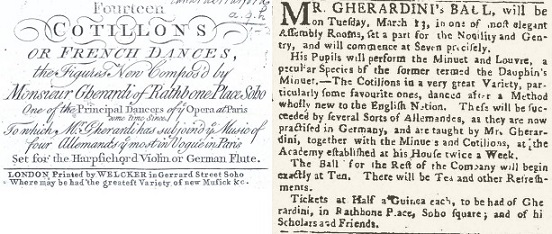
Figure 8. Gherardi's 1767 Fourteen Cotillons or French Dances. One of the first Cotillion collections published in England.
And his advert in The Public Advertiser, 9th March 1770.
First Image © BRITISH LIBRARY BOARD, a.9.h.(1.) ALL RIGHTS RESERVED
Second Image Courtesy of NewspaperArchive.com
It's notable that Fishar-1 and Saltator are the only sources in this sample to explicitly use 16 bar Changes, and to pad them with Balance and (in the case of Fishar) Rigadon sequences. Feuillade also pads with Rigadon steps, but it's unclear whether his changes are intended to last 16 bars. The music for most Cotillions published in England in the 18th Century feature repeat signs around the A strain, this hints that 16 bar changes were the norm. Hurst and Fishar-2 are the only sources to explicitly restrict themselves to 8 bar Changes, and in both cases they did so in order to simplify their Cotillions for use by the general public; in so doing they imply that 16 bar changes were more commonly performed by dancers. Gallini is the only writer in this sample to explicitly require the number of bars in the Changes to vary from one iteration to the next, though this convention could be implied in other sources.
The first change in a Cotillion was generally a Grand Rond, thereafter the changes could be introduced in any order that's desired, though each writer encouraged a specific order to the changes. Some sources, such as Saltator, Feuillade and Bruckfield, indicate that all of the potential Changes would be danced in each Cotillion, resulting in perhaps 10 repetitions of the main figure in each dance. It's likely that this was a standard convention, though most of the sources don't comment on it. Mr Siret's Set of Cotillons or French Dances published in London c.1770 record that the changes in a Cotillion depend much upon Fancy ; he went on to list many of the standard changes as the others. A former owner of the copy of Siret's book at the British Library saw fit to annotate it with a specific list of four changes for two of the cotillions - perhaps the owner wasn't inclined to dance the entire sequence. Hurst included an interesting comment in his book: if at any Time the Dances are required to be shorten'd, let the Performers call, and do the great Ring (wherever they have a Mind to curtail it) instead of the Changes that were to have followed, and so conclude it; and, in this Manner, the Cotillons may be concluded at the Pleasure of the Dancers .
Some of the source works imply that the Cotillion would end with a Change, others are silent on the subject or indicate that the Cotillion ended with a final set of figures. Feuillade is particularly clear, he wrote of the final change: The same as the First order and the dance ends by a repatition of ye figure . A similarly clear statement was made by Boutmont.
Early Quadrilles
Dances referred to as Quadrilles were enjoyed in England from the mid 1770s. The Newcastle Courant for the 6th March 1773 provides an early reference, it referred to a Grand Ball at the French Ambassador's house at which there are to be three French dances en quadrille, consisting of eight persons each . Most early Quadrilles were not the 8 person Sets that arose in the 1810s (most notable amongst which was the First Set), but rather a variation of the Cotillion usually arranged for just four dancers. The English Dance Master S.J. Gardiner wrote in his 1786 A Definition of Minuet-Dancing that Quadrilles are Danced the same as the Cotillions, only with this difference, that instead of four Couple in the Cotillions, there are but two in the Quadrilles .
There are various references to early Quadrilles being danced at English Balls of the 1780s. The Morning Chronicle and London Advertiser (7th February 1782) included an advert for a Cotillion Ball at the Pantheon. A footnote at the end of the advert reads: Several Ladies having expressed a desire to dance Quadrilles, and other figure dances, at the Cotillon Ball, Ladies who wish to make their party for that purpose, may be accomodated with a room to practise the same any morning from Twelve to Three, free of any expense . The Morning Post and Daily Advertiser (22nd May, 1786) reported on A Masqued Ball, with a supper at the King's Theatre, it reported In the course of the above entertainments will be introduced, various Quadrilles, and Pas de Deux, in different characters, composed for the occasion, by Messrs Vestris and Degueville .
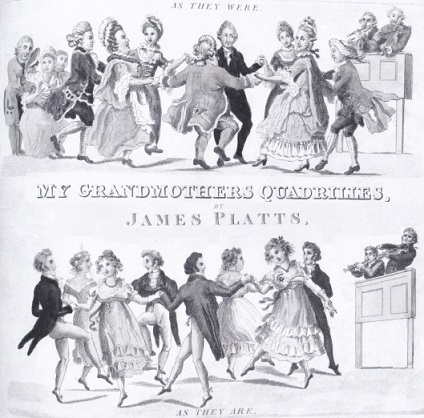
Figure 9. Details from the cover of My Grandmother's Quadrilles, Platts, 1820.
Image © BRITISH LIBRARY BOARD, g.442.f.(12.) ALL RIGHTS RESERVED
As early as 1773 Quadrilles were danced at the French Ambassador's house in London, and a dancing master called Joseph Banks (Newcastle Courant, 17th July 1773) described them as that elegant fashionable dance the Quadrille . By 1774 Quadrilles were danced at Lord Stanley's Fete Champetre. In 1775 Dance Master Delatre claimed that he had published a quadrille, being the first ever published in England (Ipswich Journal, 1st July, 1775). This early quadrille was included as part of a collection of Cotillions. He also arranged figures for country-dances to all the tunes, so that every one may be danced either as a cotillon or country-dance . In 1778 a dancing master called Mr Froment indicated that he planned to publish a collection of Cotillions and Quadrilles (Bath Chronicle and Weekly Gazette, 25th June 1778), though I've yet to locate a copy. In 1779 a Mr White advertised that he taught the echo and conge quadrilles (Ipswich Journal, 20th April, 1779). Francis Werner is also understood to have published Quadrilles in London in the 1770s, though the precise date is uncertain. A Mr. Parker in Leeds also advertised that he taught the Quadrelle in 1777 (Leeds Intelligencer, 19th August, 1777).
Early quadrilles were sometimes displayed by professional ballet dancers. For example, The Public Advertiser (16th April, 1782, see Figure 5) advertised a revised version of Congreve's The Double Dealer that was being performed at Covent Garden Theatre. It reports End of the Comedy, a new grand Divertissment, called 'The Gala'. A new Minuet and Allemande by Mr. Aldridge and Miss Besford. The Quadrilles and Cotillions by Mr. Harris, Mr Langrish, et. al.. A 1781 advert (Morning Chronicle and London Advertiser, 6th December) reports on a masked ball at the King's Theatre with a new minuet, call'd the Prince of Wales's Minuet, and Quadrilles, to be composed by Mons Noverre, and performed by all the principal dancers . A similar advert from 1783 (Morning Herald and Daily Advertiser, 13th January) reported on another masked ball at the King's Theatre: A new Minuet and Quadrilles, composed by Mons Lepicq, will be Performed by the principal Dancers . A 1782 advert in The Morning Herald and Daily Advertiser (25th January) reported on a Masqued Ball In which will be introduced a variety of Entertainments, particularly some New Buffo Caricatura Quadrilles, by a select Company of Dancers, and composed on purpose, with Catches and Glees .
These early Quadrilles may have been a temporary phenomenon. References to them mostly disappear during the 1790s. A footnote in the 1793 Ambulator describes a Brawl as a sort of figure-dance, then in vogue; and probably deemed as elegant as our modern cotillons, or still more modern quadrilles . Mr. Deneuville in Bath was still teaching Quadrilles in 1794 (Bath Chronicle and Weekly Gazette, 30th October), and as late as 1805 a Mr. West (formerly of the Corps de Ballet, London), advertised a provincial Ball featuring Cotillions, in Eights, Sixteens, and Quarter Quadrilles (Derby Mercury, 4th July). A dance master called Mr Eager even promoted his Quadrille of 24 in 1810 (Norfolk Chronicle, 24th November); this was potentially the same dance that he had described in 1809 as his Medley Cotillion, comprising of 50 symmetrical parts (Ipswich Journal, 18th November 1809).
An important Cotillion collection in the formative history of the Quadrille was published in London in 1786. This was Longman & Broderip's 6th book of Twenty Four New Cotillions. The collection claims to be as danced at the Assembly Rooms in Bath, & other Grand Balls & Assemblies; being the most favorite and fashionable, collected for the use of the Nobility & Gentry, now performing this present Spring Season, 1786 . This collection is of interest as it contains prototypical versions of the First Set Quadrilles arranged as Cotillions. They're called Les Pantalons, L'Eté, La Belle Poule and La Pastorale. There's no equivalent to the Trenis Quadrille in this collection, but the Hullin origin story credits that dance to a different source, so its absence makes sense. The Finale dance used in the First Set is a variant of L'Ete, so its absence is also understandable. There are many other Cotillions in this collection, but those four appear to be a source (perhaps indirect) of the dominant set of Quadrilles that were danced throughout the 19th Century. The first two, Les Pantalons and L'Eté are very similar to their equivalents in the First Set of Quadrilles. It's possible that the great French Quadrilles were derived from an English Cotillion collection!
Note: this Cotillion collection is the earliest source I know of that combines prototypical versions of the First Set Quadrilles into one collection. However, the individual dances may be older. For example, the L'Eté Cotillion also exists in Francis Werner's 1784 collection of Cotillions & Country Dances.
Hybrid Cotillions
The early quadrille may have been an important variation of the cotillion but it wasn't the first to arise. Several early cotillion collections included example dances arranged for two lines of four dancers, couple facing couple. The flattened form of Cotillion would encourage dancing in two groups of four, it might also encourage a different sequence of changes.
An anynonymous writer with the initials F.P. (possibly Francis Peacock) wrote a letter to the editor of the Lady's Magazine that was published in the 1772 third volume, in it was introduced a new form of dance named the Divertimento which would unite the common country dance with the cotillon. My good intention will, I hope, entitle them to a place in your useful Collection; and if they are successful as I wish them, in promoting innocent amusement, who knows but I may, one time or other, see in your Magazine, a letter from the fair hand of some lady, thanking me for the pleasure she has received from my Divertismentos. .
The shape of this hybrid dance involved two lines of dancers; but they should not stand as they do in common country dances; that is to say, all the gentlemen on one side or line, and the ladies on the other; on the contrary, as in cotillons of two lines, the gentlemen at the top must have a lady next to him, the lady a gentleman, and so on alternately on both sides, from the top to the bottom. By this arrangement, each gentleman not only has his partner opposite him, but in turning to either hand he may have the pleasure of being engaged with a lady . Groups of four or eight dancers then dance the figures with everyone moving at once, the dance would end with a country dancing style of progression which resulted in a group of four meeting a new group of four in order to repeat the figures. Two such choreographies were published, the associated form of the dance being quite different to that of a normal country dance.
Modern dancers may recognise this arrangement of dancing as the Becket Formation , it's a supposedly modern form of contra dancing... it seems we have provenance for it back to the 1770s!
Later Cotillions
Many dozens of Cotillion collections were published in London in the late 18th Century. They were published by the likes of Henry Bishop, Thomas Budd, John Fentum, James Longman, Thomas Straight, The Thompsons, Francis Lindley, Augustin Noverre, Francis Werner, and so forth. It's unusual for these later collections to feature an explanation of how to dance Cotillions, they presume the purchaser will already know.
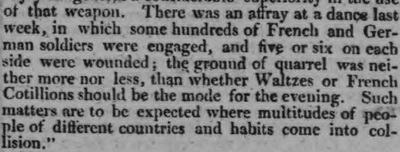
Figure 10. An affray at a dance, The Hampshire Chronicle, 16th May, 1814. Image © THE BRITISH LIBRARY BOARD. ALL RIGHTS RESERVED. Image reproduced with kind permission of The British Newspaper Archive ( www.britishnewspaperarchive.co.uk)
Cotillions were often danced at Balls and similar gatherings. For example, the St. James Chronicle or British Evening Post (22nd March, 1774) reported on the Lady Mayoress's Rout at which Cotillions were danced from 8:30pm to 12:00pm. The Hampshire Chronicle (28th March, 1774) added that the cotillon dances began ... after which they danced double cotillons till twelve . The Whitehall Evening Post (26th May, 1789) reported on Boodle's Gala at which a flower festooned Temple of Flora was arranged for the express purpose of dancing cotillions . The Evening Mail (20th July, 1791) reported on the Assembly Rooms at Tunbridge Wells, on the card assemblage nights, there are public tea drinkings at the rooms, after which the company adjourn to another apartment, to dance cotillions and country dances .
A 1792 announcement in the Bath Chronicle and Weekly Gazette (6th December) indicates that Cotillions were starting to go out of fashion in Bath: The Master of Ceremonies, finding the Cotillon Balls not so well attended as in former years ...they respectfully propose, that for the future the name of Cotillon Ball be changed to that of Fancy Ball . The new Fancy Ball had a less strict dress code (ladies could wear hats), and involved a mix of Country Dances, Cotillions and Minuets. Cotillions were still danced of course, we've investigated the content of a 1799 Cotillon Ball that was held in Bristol in another paper, you might like to follow the link to read more.
By the turn of the 19th Century the nature of the Cotillion began to change. The Morning Post (18th June, 1803) reported that the French Cotillons danced at Devonshire House on Wednesday are a new stile of dancing just introduced. The parties who danced have for some time met, under the protection of the Duchess, to practise . This new style of Cotillion may be an early Quadrille, or the 12 or 16 person contre-danses from Paris, or a similar variation. A display ball in 1810 featured both A New Grand Cotillion of 12 and a Cotillion of 9 (Norfolk Chronicle, 24th November 1810). A similar display ball in 1812 featured A Cotillion by 16 (Stamford Mercury, 11th December 1812). The anonymous author of an 1811 etiquette guide, The Mirror of the Graces, wrote favourably of the Cotillion: The rapid changes of the cotillion are admirably calculated for the display of elegant gaiety; and I hope, that their animated evolvements will long continue a favourite accomplishment and amusement with our youthful fair. However, the references to Changes became increasingly vague, perhaps implying that they were being dropped.
The phrase French Country Dance was sometimes used in London to describe a Cotillion (or Cotillion variant). Dancing Master Daigueville used the term in 1773 (Hampshire Chronicle, 18th January 1773), and various examples can be seen amongst the dance collections published by Michael Kelly between 1803 and 1806. Kelly's French Country Dances appear to have been Cotillions without changes, so Quadrilles in all but name. Such dances were being enjoyed at Devonshire House in 1803 (Morning Post, 17th June), they're presumably the new stile of dancing mentioned above. Lady Shaftesbury also hosted a Ball in 1808 featuring a nouvelle kind of cotillion, called a French Country Dance , Four couple made up the set, the dance attracted great attentions, and was warmly applauded even by clapping of hands (Morning Post, 23rd June 1808). A representative collection of French Country Dances issued in 1815 by F.J. Klose is available here.
The Quadrille proper arrived in London in the 1810s. It can be difficult to distinguish between 19th Century Cotillions and Quadrilles. If a Cotillion appears in a printed source, there's often little to distinguish it from a Quadrille, other than the name; if Changes were intended to be danced, the choreographers didn't feel the need to mention them. For example, Frédéric Venua and André Deshayes (both of the King's Theatre) advertised a set of Six New French Country Dances in July 1816 (Morning Post 23rd July 1816); a month later what was probably the same publication was advertised as A Set of French Cotillions (Morning Post, 10th August 1816). The contents are prototypical Quadrilles, closely related to the First Set of Quadrilles, but subtly different. It's clearly a transitional work, at least from a London centric perspective. Venua's adverts from December 1816 mention both Quadrilles and Waltzes, but not Cotillions; this hints that he'd adopted the changing terminology. Examples from this collection include La Bien Amie (a Pantalon variant), La Sophie (a L'Ete variant) and Les Deshayes (a Trenis variant).
The anonymous author of the 1818 Le Maitre A Danser explained the difference between Quadrilles and Cotillions as follows: The Quadrilles, or Cotillons, at present are the same, though the difference is, that the latter are the single dances, as le Pantalon, l'Ete, &c.&c. and the former are more complicated, with regulated steps, but now all are called Quadrilles .
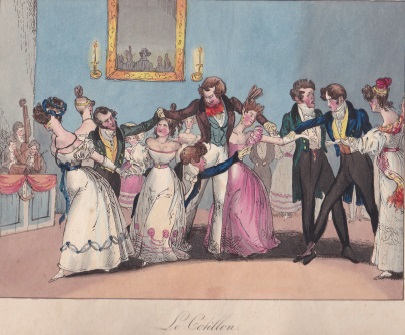
Figure 11. A German Cotillion, Vienna, c.1825. From Scenes du Bal by Charles Henry.
Some adverts placed by early 19th Century Dance Masters continued to feature Cotillions. For example, Mr. Le Pulley in The Morning Post (10th January 1804) advertised instruction in Country Dances, Reels, Jiggs, Hornpipes, Strathspeys, Gavots, Minuets, Cotillons, Quadrilles, Ballets, and a variety of fancy Irish and Scotch Dances . An 1806 advert by Louis Litolff advertised new music as Danced at Mr. Denis's Ball at Almack's Assembly Rooms. It advertised a Set of Cotillions &c. dedicated to Mr. Denis's Pupils, by L. Litolff, price 3s . It also advertised Quadrille music for sale. An 1808 advert listing Thomas Wilson's repertoire and price list only included Cotillions at the very end, after 24 other dances, and they were unpriced, hinting that they're an unimportant part of his repertoire; the same remained true in 1811.
A humorous 1814 reference to Cotillion dancing can be found in The Hampshire Chronicle (16th May, 1814): There was an affray at a dance last week, in which some hundreds of French and German soldiers were engaged, and five or six on each side were wounded; the ground of quarrel was neither more nor less, than whether Waltzes or French Cotillions should be the mode for the evening. (see Figure 10).
The dance masters of the 1810s did refer to the existence of Cotillions, but rarely wrote of them. For example, Wilson barely mentions Cotillions amongst his prolific dancing works of the 1810s and 1820s. He included a few Cotillion tunes in his 1816 Companion to the Ball Room, but no figures. He indicated in his 1819 Quadrille and Cotillion Panorama that a key feature of the Cotillion is that all 8 dancers move together, and he suggested that the Finale in a Quadrille Set should more properly be considered a Cotillion. But he only made a single passing reference to the Cotillion Changes, and that was to indicate that they're not used in Quadrille dancing. He did publish an 1817 work called L'Etoile Cotillion; it would be fascinating to review this work, but I've failed to locate a copy. A similar statement could be made for G.M.S. Chivers, his diverse dance publications of the early 1820s barely mention Cotillions.
References to Cotillions began to disappear from the English press around 1815. Dancing Master Edward Payne continued to host a Waltz and Cotillon Academy in 1816 (The Morning Post, 29th April 1816), but dropped references to Cotillions shortly thereafter. T.W. Lloyd advertised that he taught the Waltz and French Cotillions in six lessons in 1814 (The Morning Post, 24th December), but he ceased to reference them in later adverts. The First Set of Quadrilles arrived c.1815 and were immensely successful, the ensuing Quadrilling phenomenon displaced the Cotillion from English dance halls. Despite this change, Thomas Wilson did promise that a Cotillion would feature in one of his 1817 Balls (The Morning Post, 17th June, 1817), but that's amongst the final references. I have a slightly later reference from 1818, The Morning Chronicle wrote of a Ball attended by dancers who still prefer the old animated Strathspey and gay Country Dance to the languid movements of the modern Quadrille and the insipid Cotillion (16th September, 1818).
Note, several London based dance masters were experimenting with new dance formats in the late 1810s, and they sometimes appropriated older terminology to do so. For example, Thomas Wilson advertised a variety of new Cotillions in 1820 (Morning Chronicle, 1st July 1820). How similar such dances were to regular Cotillions is difficult to guess.
It's interesting that the last high-profile dance master to actively promote Cotillions in Regency London was Edward Payne. He was also (if his claims are to be believed) the first to start teaching the new Quadrilles in London. This is unlikely to be a coincidence. Quadrilles effectively replaced the Cotillion in the English social dancing experience. A dancing master from the King's Theatre Opera House, James Platts, published a set of Quadrilles in 1820 (The Morning Chronicle, 10th November) called My Grandmother's Quadrilles (see Figure 9). The cover reproduced the Cotillion dancing image from Figure 1. This image neatly demonstrates the generational continuity from Cotillions to Quadrilles (the cover is also an interesting discussion point for the evolution in costume and dancing styles). James Platts was also the first Englishman to register a collection of Waltzes for copyright in 1791 (London World, 26th January, 1791).
The Spirit of the English Magazines in 1825 recorded the (perhaps fictional) story of a traveller returning from 15 years in India, who visited the assembly rooms at Cheltenham. My surprise was great at finding, on entering the room, a considerable portion of the company engaged in cotillions, as I then erroneously fancied the quadrilles to be. I inquired of Colonel S., who accompanied me, how long these ancient and by-gone dances had been resuscitated into fashion? He softly whispered, "My dear fellow, do not betray yourself, they are not cotillions - they are called quadrilles." . I've added the emphasis in that text, it suitably demonstrates the attitude towards Cotillions in the 1820s.
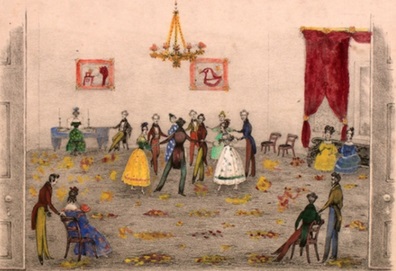
Figure 12. An image from Engel's New Waltz Cotillion, New York, 1838. Image Courtesy of JScholarship.
The term Cotillion lived on of course, especially in America, but it no longer referenced the style of dancing that was so popular in England in the second half of the 18th Century. For example, G.M.S. Chivers used the term for his Waltz Cotillions in the 1820s, and Thomas Wilson did the same in the early 1830s (though both were preceded by Nathaniel Gow who used the term c.1817). Figure 11 shows a Cotillion from Vienna in the mid-1820s, where the German Cotillion had become a form of parlour game (though in this image the Cotillion is being danced at a Carnival Ball). Figure 12 shows a similar image of an American Waltz Cotillion from the cover of an 1838 musical publication. This Cotillion image features a 9th dancer in the centre of the ring, though it might more properly be called a Quadrille. This extra dancer would attempt to swap places with another dancer whilst the rest of the Set carried on dancing.
Note: this convention of treating a Cotillion as a game may have been popular in America in the 1840s, but it had predecessors in the Cotillions of the 1760s and 1770s. For example, a Cotillion for 9 dancers can be found in Longman's c.1768 XXIV New Cotillons; or French Dances. That dance is called Le Cavalier, and involves an extra gentleman stood in the centre of the Cotillion set.
Sporadic references to English Cotillion dances persist throughout the 1820s, 1830s and 1840s, but never on the same scale as during the first 50 years.
That completes our investigation into the English Cotillion dance form between the 1760s and 1810s. As always, we'd welcome new information being made available. If you have access to documents or information that further amplifies the story of the Cotillion in England, do please get in touch.
If you'd like to learn more about dancing Cotillions, I can recommend volume 6 of John Gardiner-Garden's Historic Dance; Dr Moira Goff's Dance in History blog is also a great source of additional information. If you'd like to dance Cotillions, there are many examples animated here at RegencyDances.org.
Addenda: An excellent paper by Anne Daye of the Historical Dance Society titled The Cotillon: its origins, development and demise has recently (October 2022) been published on-line. It is available in Volume 4, Number 4 of the Historical Dance – The Journal of HDS. I'd strongly encourage any reader who would like a deeper understanding of the history of the Cotillion to follow the link and read more.
|


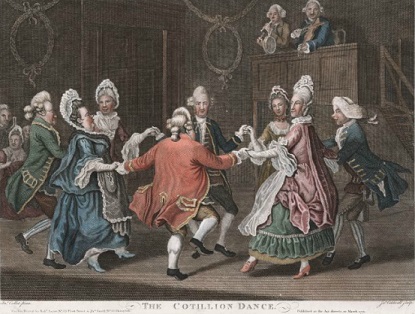 Figure 1. The Cotillion Dance, Caldwall, 1771. Courtesy of The Lewis Walpole Library, Yale University.
Figure 1. The Cotillion Dance, Caldwall, 1771. Courtesy of The Lewis Walpole Library, Yale University.
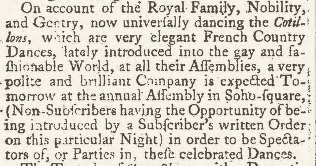 Figure 2. The Public Advertiser, 8th March, 1768. (Courtesy of NewspaperArchive.com )
Figure 2. The Public Advertiser, 8th March, 1768. (Courtesy of NewspaperArchive.com )
 Figure 3. The Figure of the Dancing Room, Hurst, 1769.
Figure 3. The Figure of the Dancing Room, Hurst, 1769.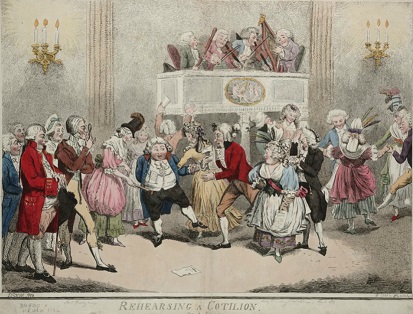 Figure 4. Rehearsing a Cotilion, I. Cruikshank, 1792. Courtesy of The Lewis Walpole Library, Yale University.
Figure 4. Rehearsing a Cotilion, I. Cruikshank, 1792. Courtesy of The Lewis Walpole Library, Yale University.
 Figure 5. Stage dancing, an advert in The Public Advertiser, 16th April, 1782. (Courtesy of NewspaperArchive.com)
Figure 5. Stage dancing, an advert in The Public Advertiser, 16th April, 1782. (Courtesy of NewspaperArchive.com)
 Figure 6. Fishar's advert in The General Advertiser and Morning Intelligencer, 5th March, 1778. (Courtesy of NewspaperArchive.com)
Figure 6. Fishar's advert in The General Advertiser and Morning Intelligencer, 5th March, 1778. (Courtesy of NewspaperArchive.com)
 Figure 7. Le bal paré, by Antoine-Jean Duclos, 1774; featuring what appears to be a French Cotillion
Figure 7. Le bal paré, by Antoine-Jean Duclos, 1774; featuring what appears to be a French Cotillion  Figure 8. Gherardi's 1767 Fourteen Cotillons or French Dances. One of the first Cotillion collections published in England.
Figure 8. Gherardi's 1767 Fourteen Cotillons or French Dances. One of the first Cotillion collections published in England.
 Figure 9. Details from the cover of My Grandmother's Quadrilles, Platts, 1820.
Figure 9. Details from the cover of My Grandmother's Quadrilles, Platts, 1820. Figure 10. An affray at a dance, The Hampshire Chronicle, 16th May, 1814.
Figure 10. An affray at a dance, The Hampshire Chronicle, 16th May, 1814.  Figure 11. A German Cotillion, Vienna, c.1825. From Scenes du Bal by Charles Henry.
Figure 11. A German Cotillion, Vienna, c.1825. From Scenes du Bal by Charles Henry.
 Figure 12. An image from Engel's New Waltz Cotillion, New York, 1838.
Figure 12. An image from Engel's New Waltz Cotillion, New York, 1838.